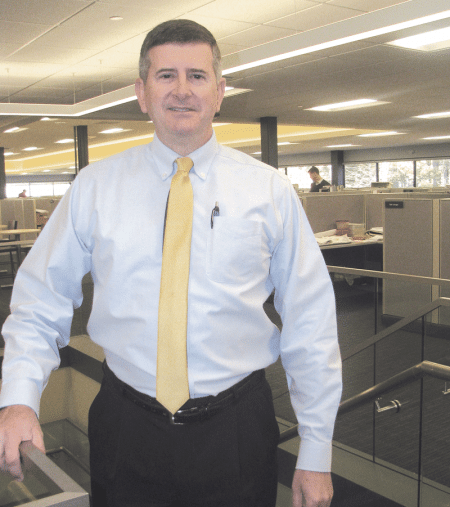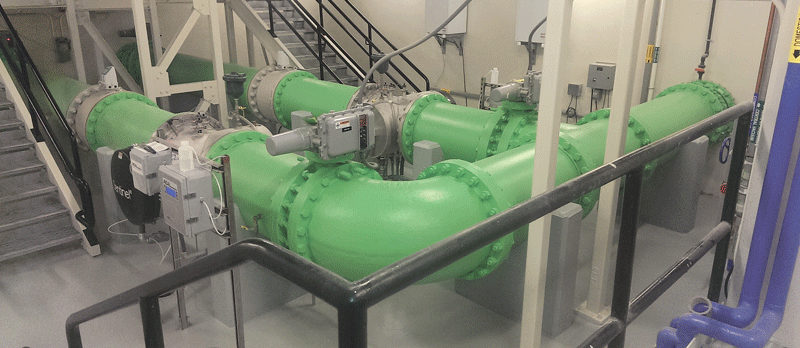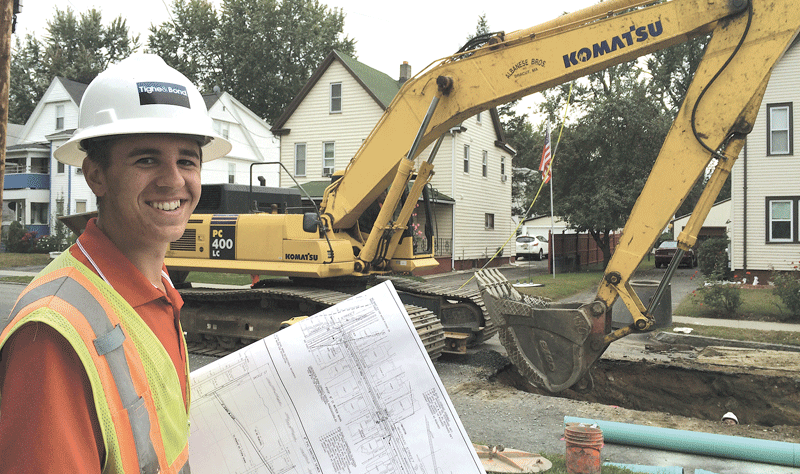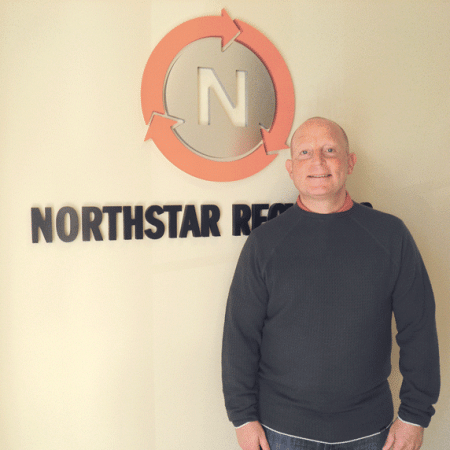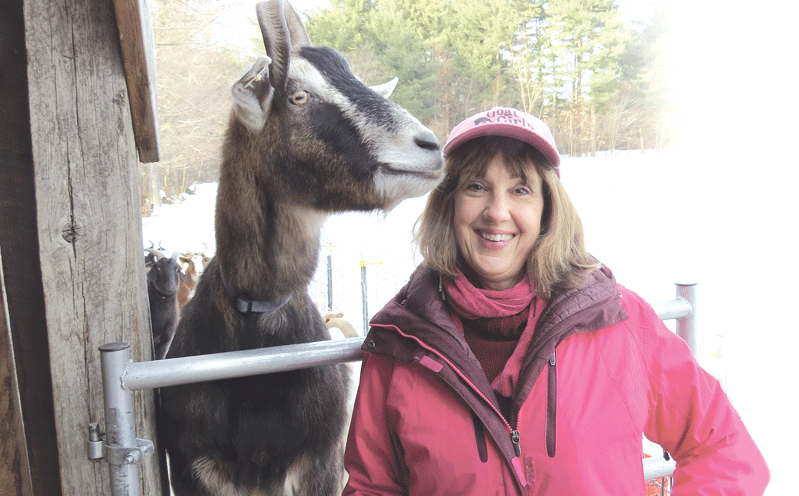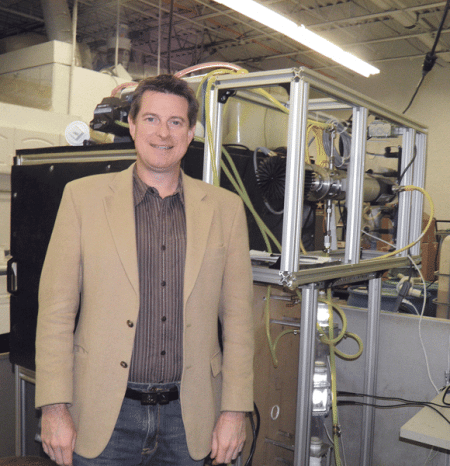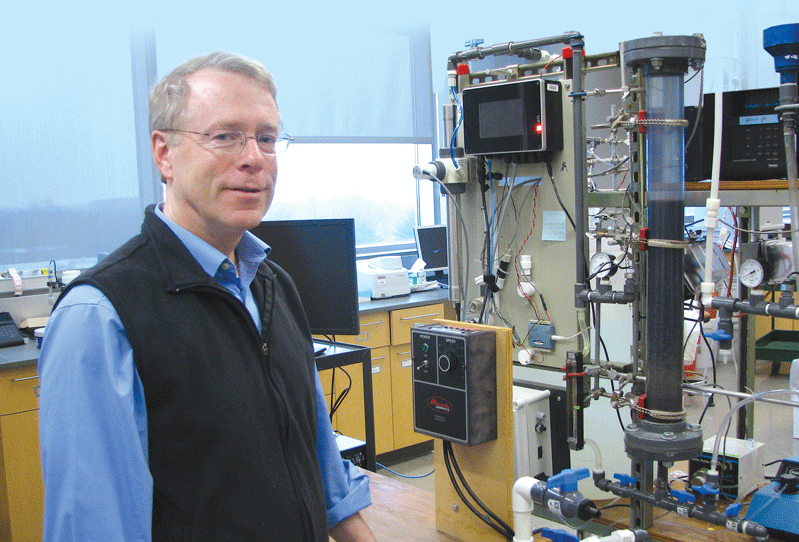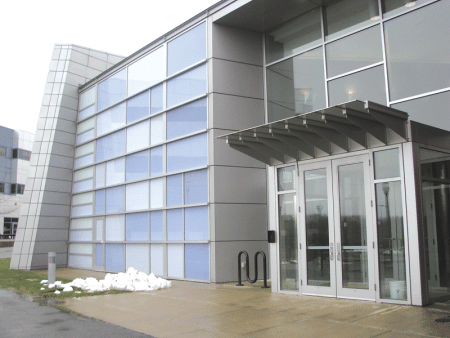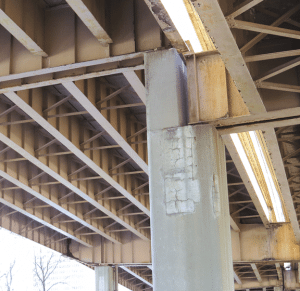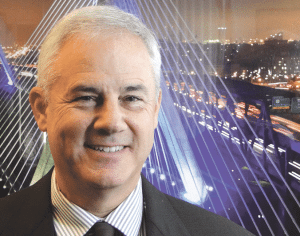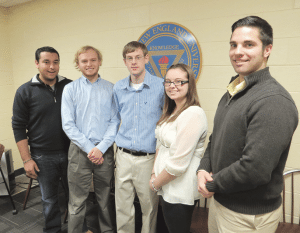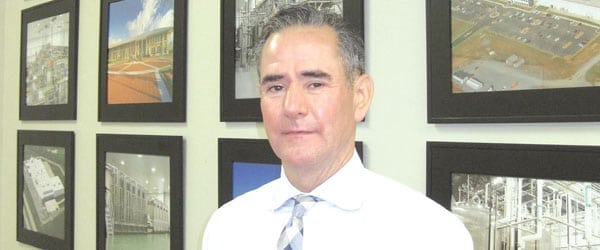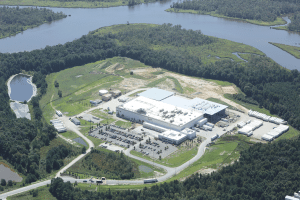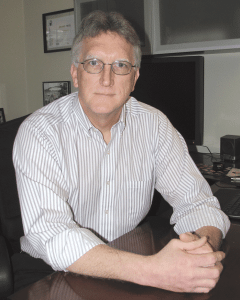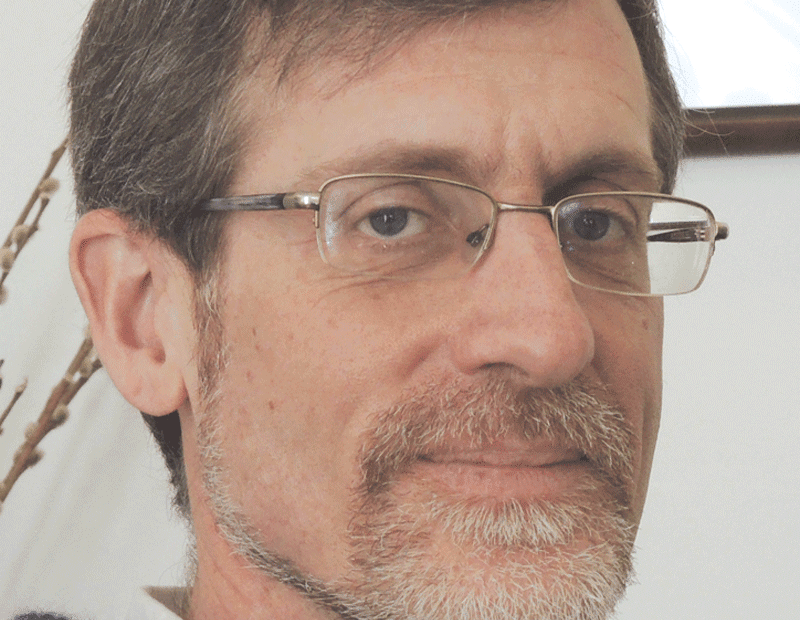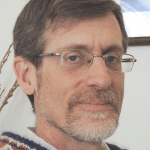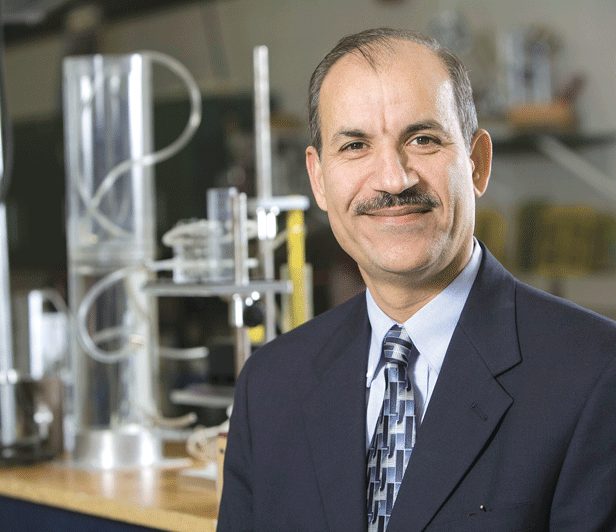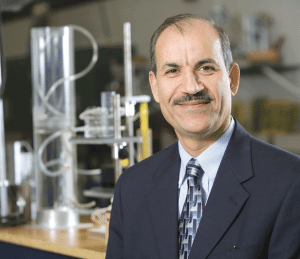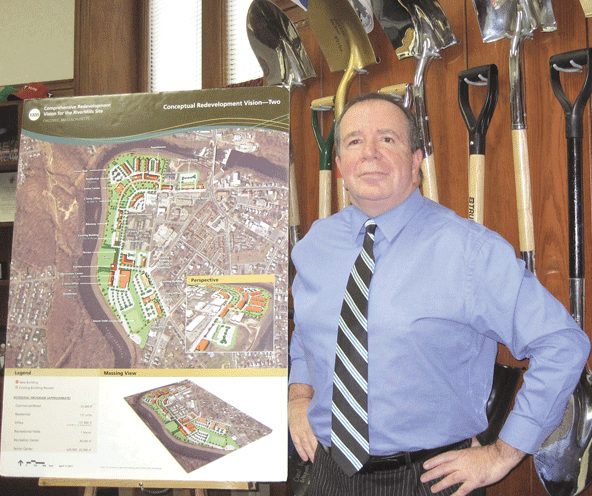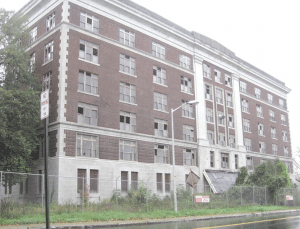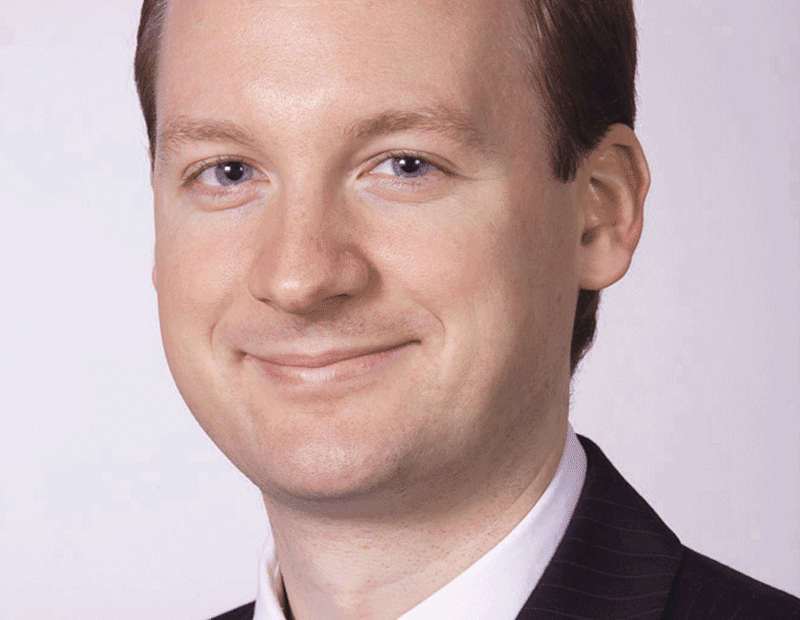Scaling Up

John Carpenter, left, and Neville Orsmond proudly display some of the commemorative 50th-anniversary rods being manufactured at Thomas & Thomas.
Five years ago, South African Neville Orsmond, an avid fly fisherman, purchased the Thomas & Thomas company and went about resuscitating perhaps the iconic brand within that industry, one that is celebrating its 50th anniversary this year. While putting the company on a solid foundation, he has also made it part of conservation efforts locally and globally that will help ensure this sport’s sustainability and preserve some of the most beautiful places in the world.
As the celebrated fly-rod brand Thomas & Thomas marks a milestone — a half-century of helping anglers land the big ones — there is much to celebrate.
Starting with the fact that the brand is still here to commemorate this occasion. That wasn’t a given when Neville Orsmond purchased the Greenfield-based company in late 2015, at a time when the brand wasn’t living up to its high standards for quality, sales were reflecting this reality, and the future was certainly in doubt.
But Orsmond, the South African and avid fly fisherman who visited the plant in the fall of 2015 and became inspired to purchase the company and mount a salvage operation, now has Thomas & Thomas hitting on all cylinders.
Indeed, the workforce has doubled since he took over, sales have increased by 40% on average since Orsmond bought the company, new equipment has been installed and more efficient processes put in place, and the brand fully lives up to the slogan has been attached to it for decades — “the rod you’ll eventually own.”
“We can’t make enough rods to sell — we’re struggling to keep up with demand,” said Orsmond, stating the problem — if it’s really a problem — in concise, impactful fashion, adding that the brand, which had suffered reputation-wise earlier in the decade, is back on its lofty perch looking down on the rest of the industry.
Which is why there is plenty to celebrate as the company marks 50 years since two brothers-in-law named Thomas — Dorsey and Maxwell — decided they could make a fly rod batter than anyone and went ahead and started making them.
Among the things being celebrated:
• The fact that the company still does almost everything by hand and has strongly resisted any and all thoughts of moving to something approaching mass production, despite those struggles to meet demand;
• The waiting times that this operating philosophy creates — maybe nine months for a coveted bamboo rod and four days to two weeks for a composite-material rod. Customers generally understand the wait and the reason for it, said John Carpenter, the company’s sales and marketing manager, adding that they appreciate their rod even more when it does arrive;
• The 50th-anniversary editions of both the company’s bamboo and composite rods, items that are in high demand for their quality, beauty, and what that number ‘50’ signifies — a half-century of excellence;
• The tours Carpenter gives to those who find their way to this decidedly rural location near the border with Bernardston and the T&T facility on Barton Road. Many do, said Carpenter, adding that, during the fall, the busiest time for such visits, he might average one a day and at least a few a week. They’re given to long-time customers, the curious, and even some celebrities who fall into both categories, such as Aaron Lewis, lead vocalist, rhythm guitarist, and co-founder of Staind, who recently dropped by to pick up a new rod and take a look around;
• The ways in which the company is working to bring young people into the sport, something necessary to ensure its survival, said Orsmond, adding that the results of efforts that involve a number of organizations are quite encouraging, and he’s proud to note that Millennials, by and large, have embraced fly fishing, and for a number of reasons, as we’ll see;
• And also the ways the company is taking steps to help preserve the environment and improve conditions for fly-fishing enthusiasts, both locally and globally. Such efforts include ongoing work to secure more fish-friendly water release at the Fife Brook Dam on Deerfield River and support of initiatives undertaken by the Yellow Dog Community and Conservation Foundation (YDCCF), which has the stated mission to “protect, preserve, and enhance the places that matter to anglers.”
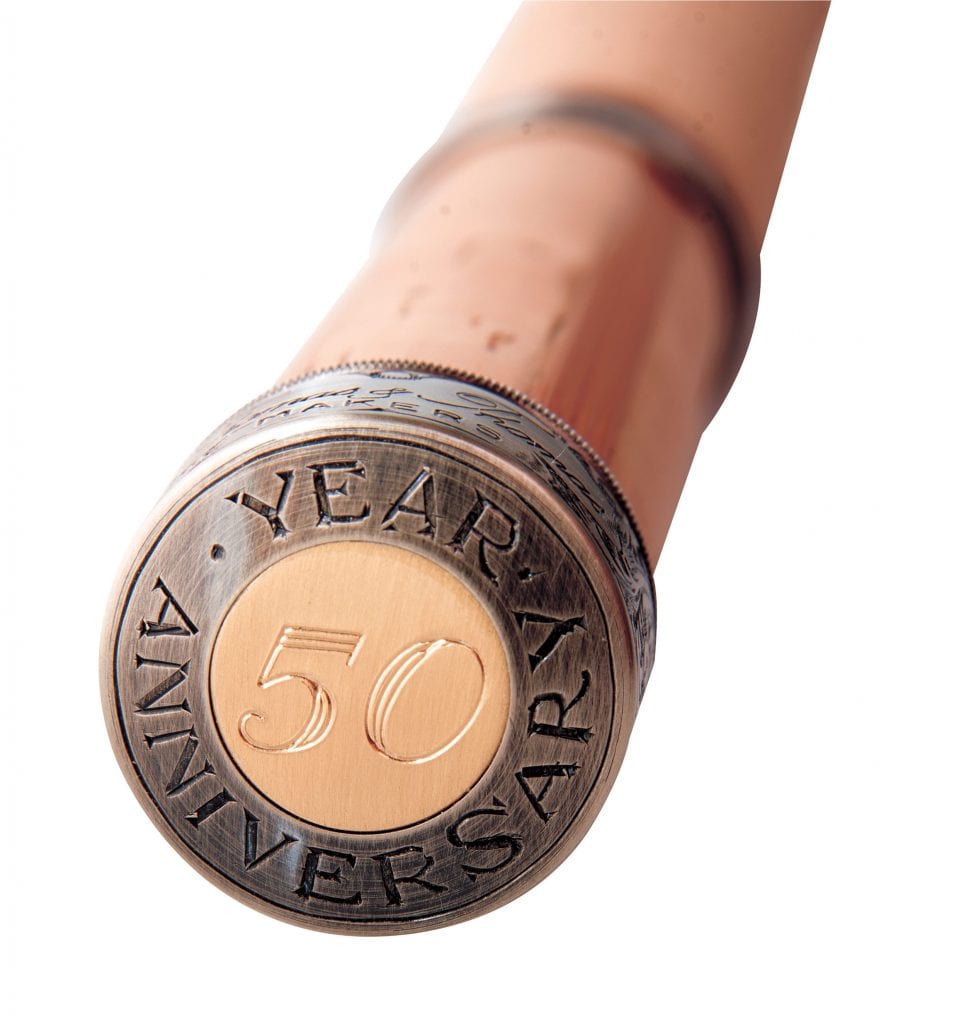
One of the commemorative rods being made to celebrate a half-century of excellence at Thomas & Thomas.
“For our industry and for our business, all fly fishermen are conservationists — otherwise, we wouldn’t be fly fishermen,” Osmond explained. “It’s our job to teach people, and it’s our job to make a difference at the end of the day.”
As noted at the top, there are plenty to things to celebrate as T&T turns 50. The stability and growth of the brand is a big part of it, but so are the company’s efforts to preserve and enhance fishing spots and spawn a passion for an activity that people can enjoy for a lifetime.
For this issue and its focus on environment and engineering, BusinessWest looks at how the T&T brand is not only enjoying a renaissance, but how the company is giving back — in all kinds of ways.
Cast of Characters
“It’s like the Porsche 911 … when it’s really good, you don’t change it.”
That’s how Orsmond chose to describe the Thomas & Thomas Paradigm series of rods, a name that has been in use at the company for decades now. Only there’s a new Paradigm series, one that has firmly captured the attention of the industry, having won ‘best new dry-fly rod’ honors for 2020 in Fly Fisherman magazine’s annual Gear Guide.
And it’s not the only product in the catalog to earn hardware recently. Indeed, T&T’s new Zone line of rods, a mid-priced model designed specifically to help introduce new people to the sport, garnered ‘best new rod series honors’ in the 2019 Gear Guide, as well as best-of-show honors for saltwater fly rods at the International Fly Tackle Dealers event in Orlando in 2018.
These honors speak to how the company has regained considerable ground since Orsmond started righting the ship in 2015, and also how it’s pushing ahead with new concepts and strategies to properly position itself for the next 50 years.
“It’s a very exciting time,” said Orsmond, with a noticeable trace of understatement in his voice. “It’s been an amazing few years — we’ve been up every year almost 40%, and we’ve greatly increased our staff; we’re employing a lot more people. We have a ways to go, but we’re making steady progress.”
And that comment covers essentially every aspect of the company, from sales and marketing to workforce development and new-product development. And all of it was necessary to not only bring this brand back to where it was decades ago, but also secure a solid future.
More aggressive marketing has been one of the keys, said Carpenter, noting that such efforts were shoved to the back burner earlier in the decade as the company slashed the budget for such initiatives — and paid a price for it. Orsmond has significantly increased the marketing budget, giving the company a much greater presence.
“The company had really pulled back on marketing by the time Neville arrived, but he has greatly expanded the show schedule,” he explained, referring specifically to the Fly Fishing Show, a seven-event circuit in locales ranging from Marlboro, Mass. to Atlanta. The series starts up again on Jan. 3 in Denver, and wraps up at the Lancaster County Convention Center in Pennsylvania in early March.
“We don’t sell product at the shows, we do this to build the brand and help familiarize customers with the product,” he explained, adding that he’ll be getting on a plane to Denver just after the new year. “It gives them a chance to see, feel, touch, and cast.”
Beyond these shows, the company is investing in print advertising and social media — the latter being a concerted effort to capture and maintain the attention of younger generations, Carpenter went on, adding that such efforts are necessary because, while the T&T brand didn’t disappear from the landscape earlier in the decade, it did suffer from what amounted to lack of attention.

Finished rods on the shop floor at Thomas & Thomas. Company President Neville Orsmond says it is struggling to meet soaring demand.
Now refocused, the company has put together a strategic plan of sorts that calls for everything from continuing its long tradition of making its rods in this country and by hand — things few competitors can claim — to bringing more products to the market, such as clothing and accessories, with the Thomas & Thomas name on them, to training a new generation of employees.
“We’re not changing our ways to make more rods,” said Orsmond. “We took the hard way — we manufacture everything in the U.S., and to make everything here, by hand … I believe the consumer sees more value in our product.”
But finding and training new workers to make T&T’s famous rods — and the company has been hiring steadily since Orsmond arrived — has been a considerable challenge.
Indeed, while all manufacturers are struggling to find workers these days, this one has a deeper challenge because of the intricacy of the work and the passion needed to do it right day after day.
Passion can’t be taught, but it can be developed, said Orsmond, adding that many employees who have been with the company for two decades or more have played key roles in training the growing workforce.
“Between everyone here, we have more than 100 years of experience in how to make rods,” he said. “That makes it easier to bring in people and show them the right way to do things, the right way to make a rod that performs.
“Anyone who wants to come work here loves fly fishing and understands how it works,” he went on, hinting strongly at where the passion comes from. “When you’re standing in the river with a rod and you’re casting to a rising fish, your heart stops pumping, and it’s all excitement. And you look around, and you’re in a beautiful area. They get all that.”
It Comes Naturally
But to secure the next 50 years for this company, those at T&T know their work has go beyond marketing, new products, and training a workforce.
Indeed, the industry has to attract more people to the sport, said both Orsmond and Carpenter, and especially young people. And it also has to make sure this pastime is sustainable, a challenge that grows in size and scope as more land comes under development and climate change continues to alter the landscape.
“If there are no fish … there’s no fishing,” said Carpenter, summing things up succinctly, adding that this mindset explains the company’s efforts both globally and locally to protect the environment for the generations to come. “Anyone who becomes passionate about fly fishing almost automatically has an appreciation of the environment they’re doing it in — that’s part of the sport, really.”
As for the current generations, it wasn’t very long ago when people within the sport-fishing industry were worried about the future of the pastime and the business, said Carpenter, adding that, in recent years, such fears, while not entirely put to rest, have eased considerably.
And the reason is the manner in which Millennials have been drawn to the sport, he said, adding that they have played a big part in the 16% growth rate the industry has seen over the past few years.
“I think we’re seeing a resurgence in young people getting involved in fly fishing and being interested in the sport,” he told BusinessWest. “And part of the reason is the role that social media plays in enabling people to share their adventure. When people share their adventures online, it gets people excited; they see what someone is doing in India, Thailand, the Seychelles, South America, or the South Pacific — all the places people are going to fly fish.
“It’s part of a surge in adventure travel and sports like skiing and snowboarding, and the GoPro craze,” he went on. “That’s part of what’s driving the industry forward and getting young people involved, as opposed to the traditional view of two older men standing on a riverbank smoking cigars and waiting for the trout to rise.”
While working to attract more people into the sport, the company is also trying to engage them in efforts to respect the environment, protect it, and preserve it for future generations. And the two missions certainly go hand in hand, said Orsmond, adding that the company’s efforts are both local and global in scope.
Locally, on the Deerfield River, which runs for 76 miles through Southern Vermont and Western Mass., the company is actively engaged with Trout Unlimited and other groups and individuals to help create what Orsmond called a “healthier river.”
Elaborating, he said the releases of water at the Fife Brook Dam are creating an unhealthy situation for fish and other wildlife that results when there is too much or too little water in the river on a regular basis, meaning something that doesn’t happen naturally.
“There’s not enough water being released during some months to cover the whole bottom of the river,” he explained. “They’ll release a lot of water, and these fish, brown trout, will spawn. But when they drop the water level, these eggs will be uncovered, and those fish won’t make it.”
Working with the Mass. Executive Office of Environmental Affairs and energy companies that own the dam and use it to generate hydro power, T&T, Trout Unlimited, and other parties are trying to get more water released, thus utilizing more of the riverbank.
“The whole aquatic ecosystem, the bugs and everything else, will be more abundant; there will be more food for the fish and, ultimately, a much healthier river,” he went on, adding that these efforts are a work in progress with no timeline on when or if steps might be taken.
“Our end goal isn’t to point fingers,” he said in conclusion. “Our end goal is to create better natural resources and preserve the environment.”
On a more global basis, the company is supporting efforts undertaken by the YDCCF to support the fishing industry and protect areas where people fish. Examples include work in the Bahamas to support the devasted fly-fishing industry on Abaco and Grand Bahama in the wake of Hurricane Dorian.
Another example has been the company’s work to support YDCCF’s efforts in Belize to curb the use of gillnets, which are a suspected culprit in declining fish stocks there.
“Gillnets are horrible … a lot of species that are not even used for eating or selling are being killed,” Orsmond explained. “There are ways to eradicate gillnets and also help these fishermen to become fly-fishing guides rather than fish with gillnets.”
Ties That Bind
These are all examples of how Thomas & Thomas, as it continues to rebuild brand and grow sales, is working actively to preserve the environment and an industry that can’t be separated from it.
“We’re making fly rods, and we’re helping on conservation issues, both inside this country and around the world,” Orsmond said. “That should be the mindset of any responsible manufacturer, and it’s a very big part of who we are as a company and what we’ve stood for 50 years.”
And it’s one of the many things being celebrated as T&T marks this important milestone.”
George O’Brien can be reached at [email protected]







 “I say to a lot of young people, ‘you know, everything you can see has been designed by engineers. Engineers literally designed the entire world.’”
“I say to a lot of young people, ‘you know, everything you can see has been designed by engineers. Engineers literally designed the entire world.’”


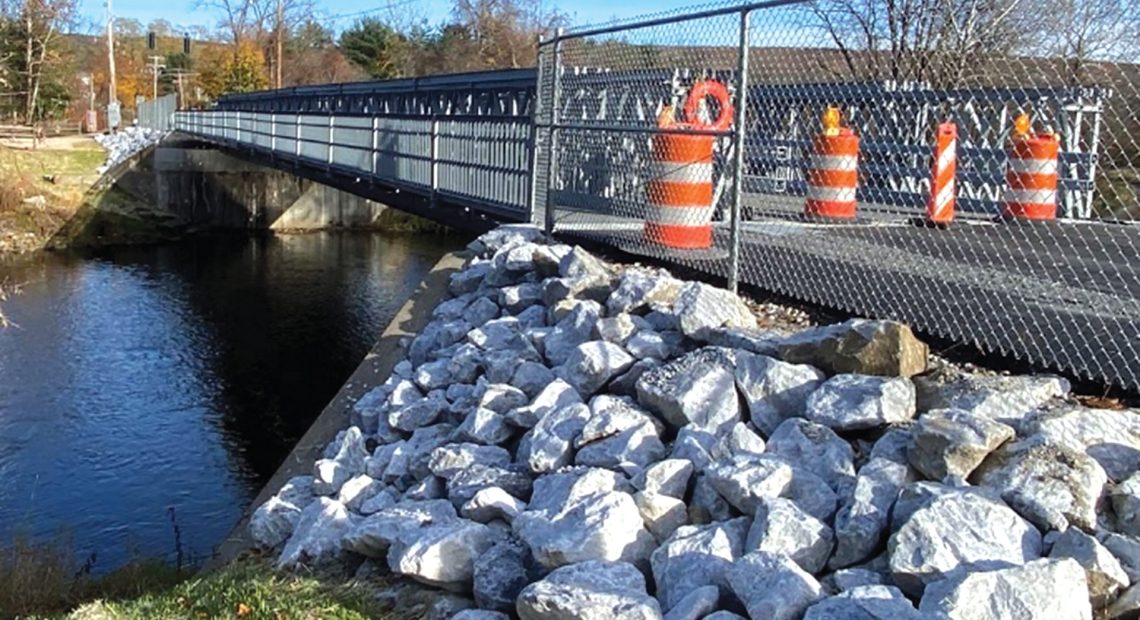







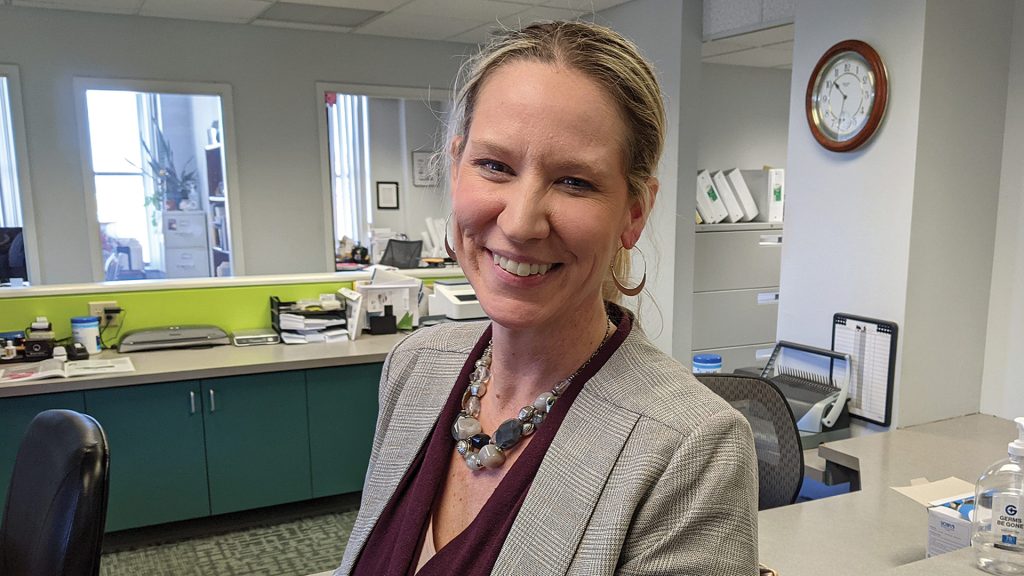
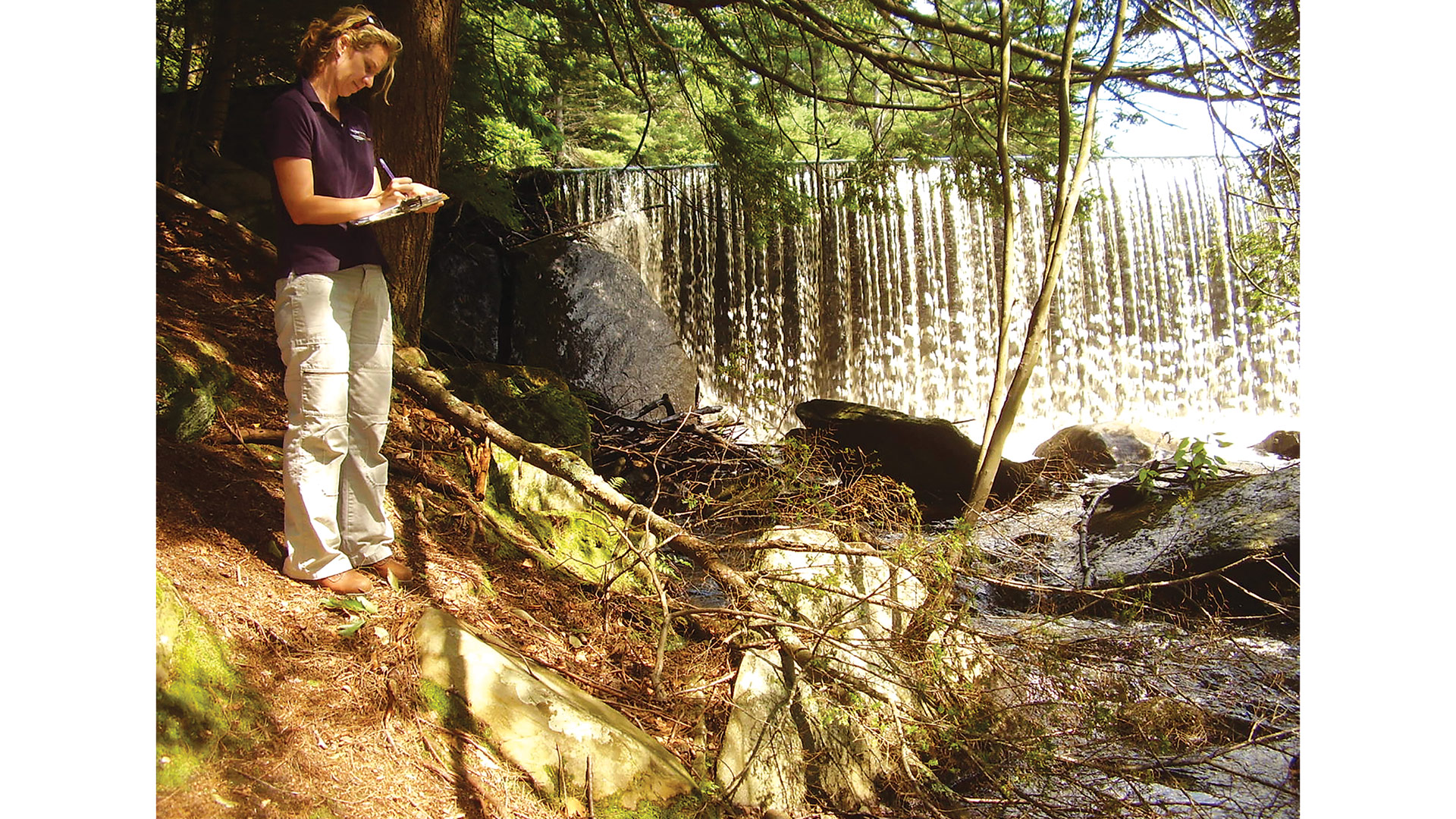
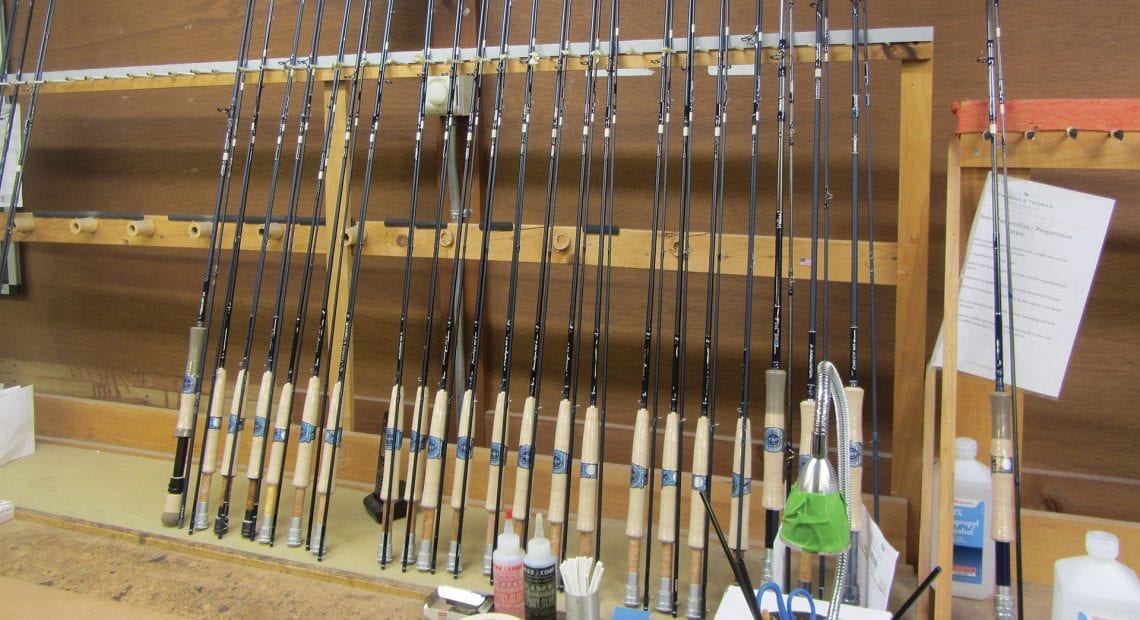



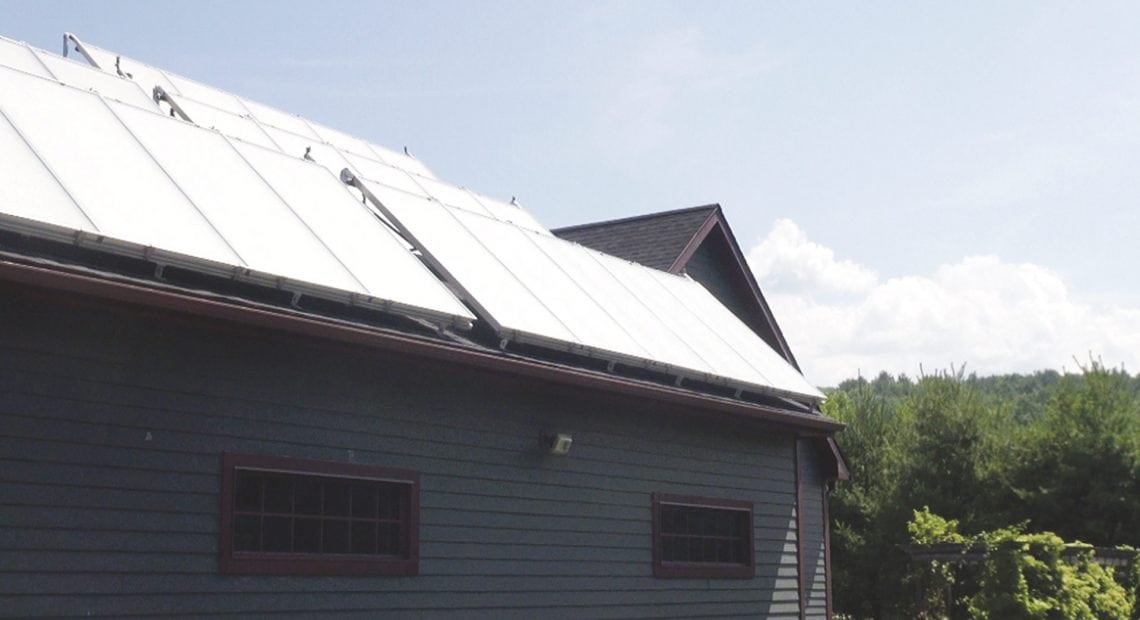

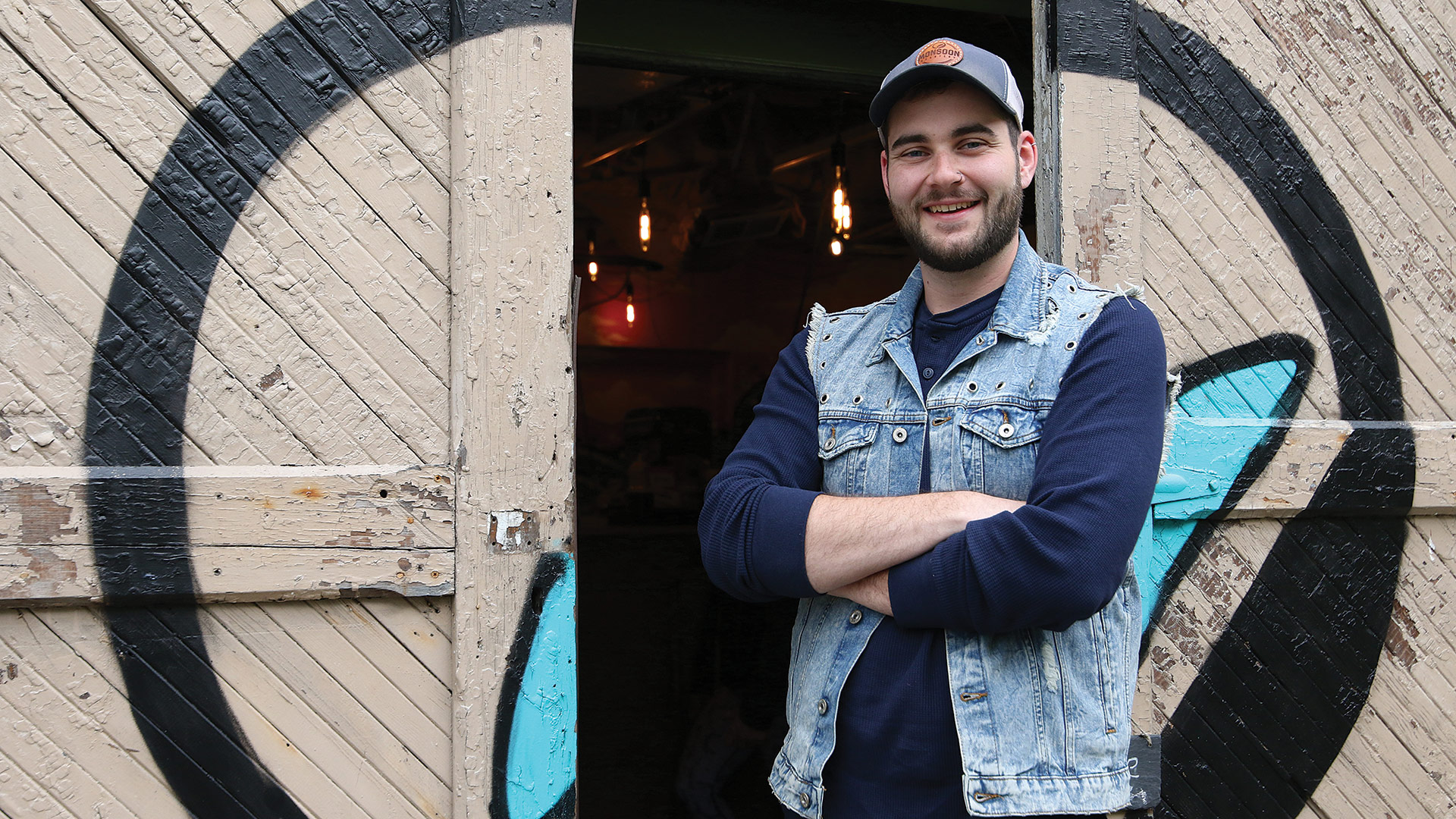
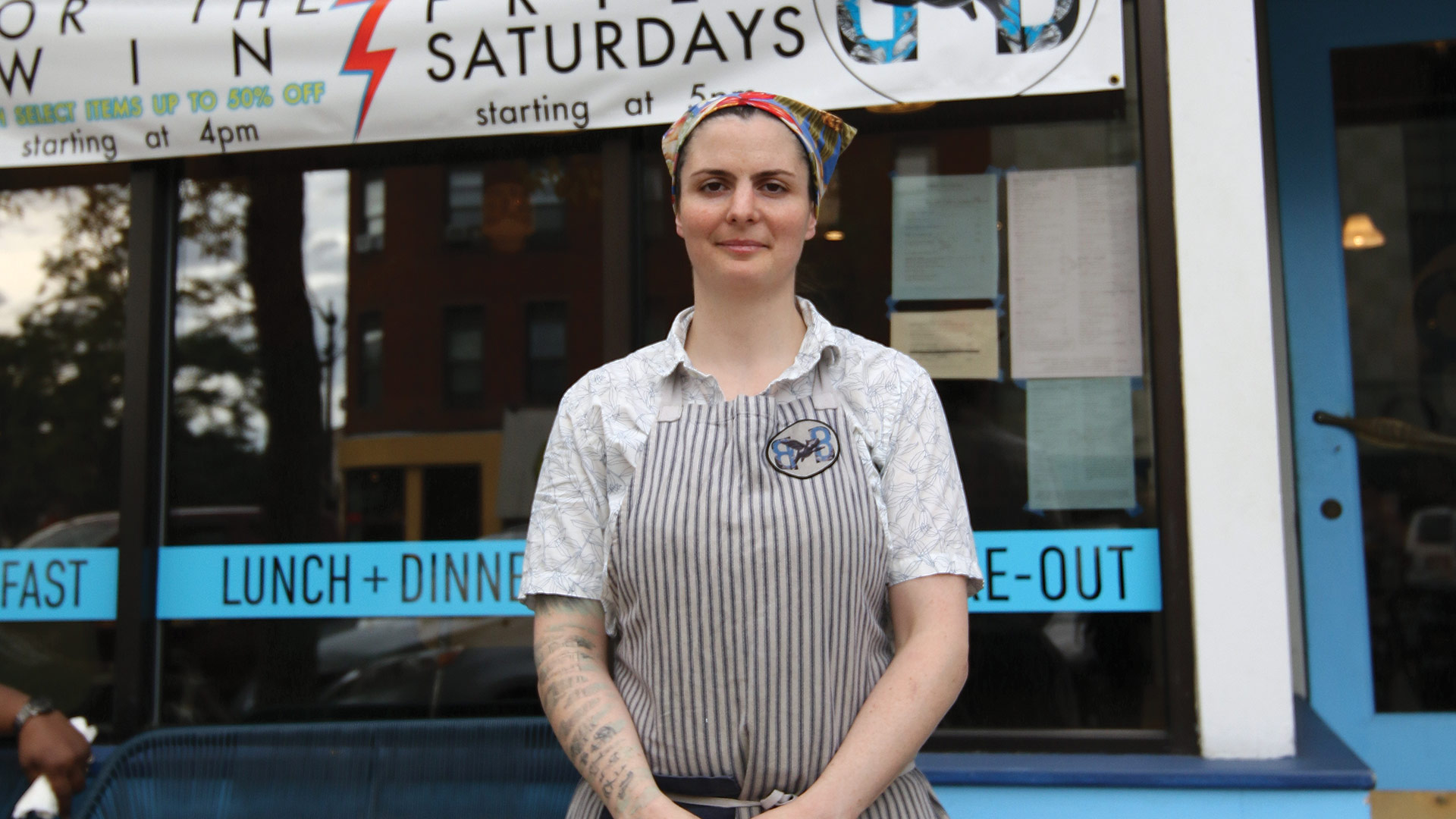








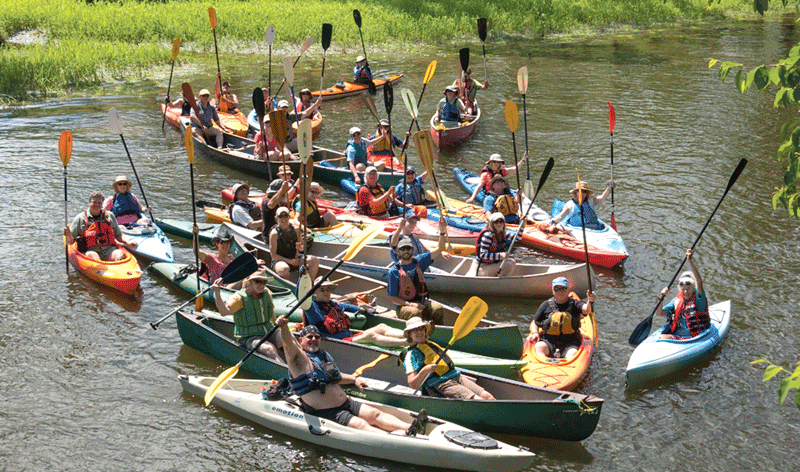

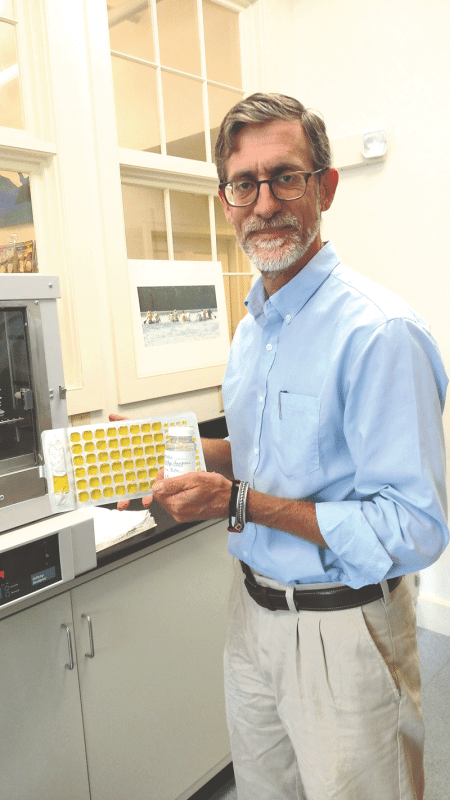
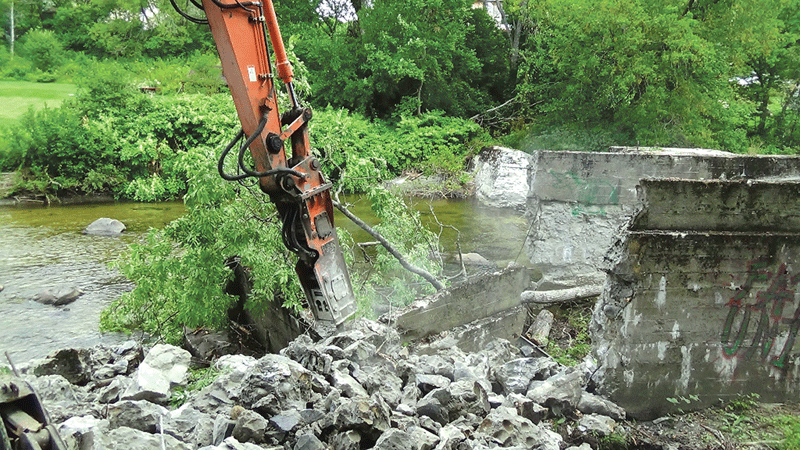



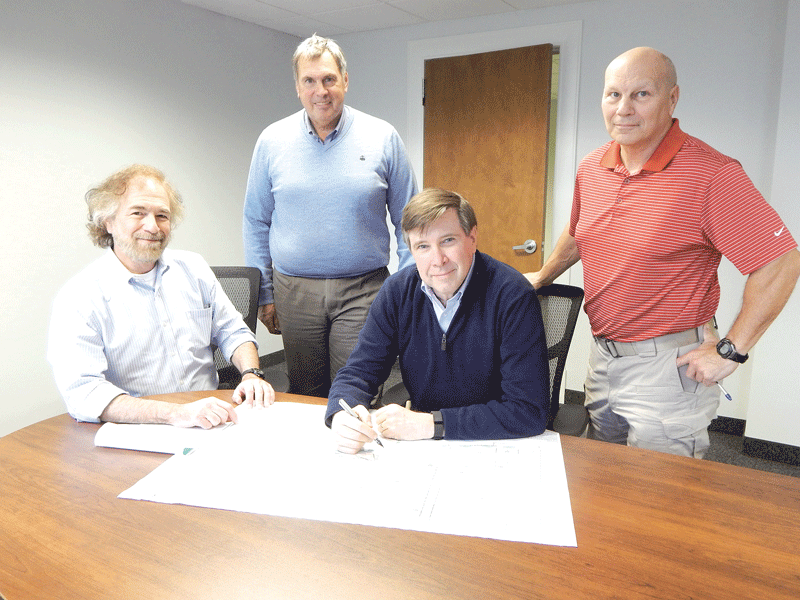



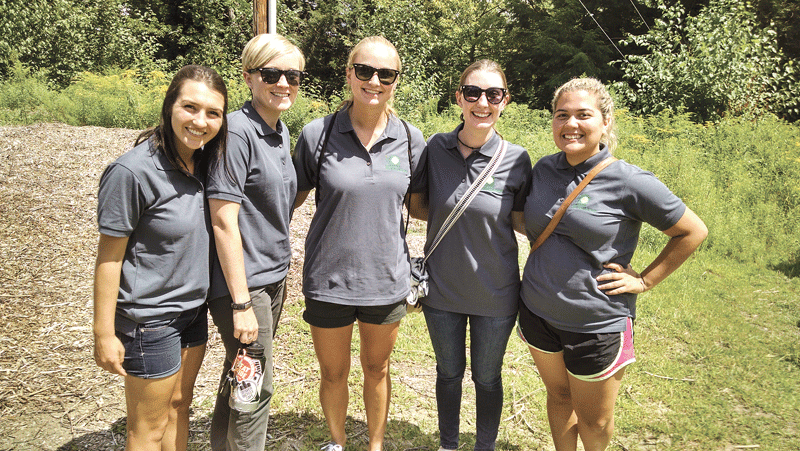

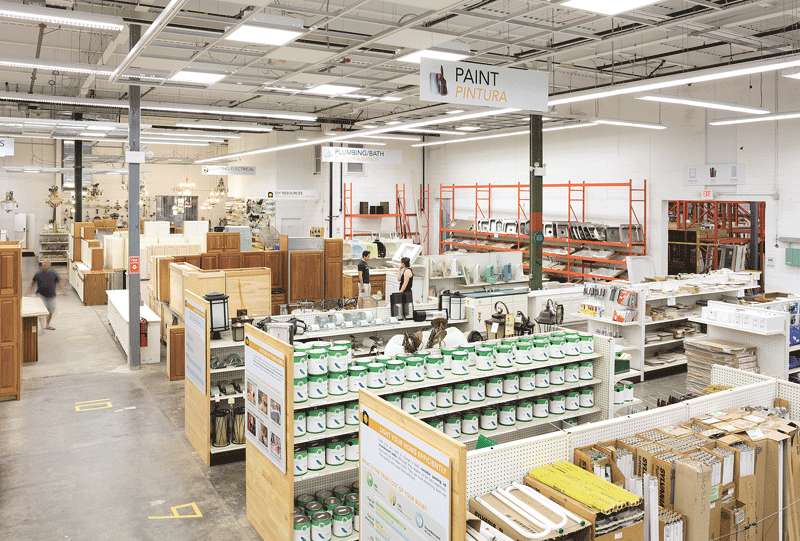 Most importantly, though, EcoBuilding Bargains has met an ambitious goal set when it moved, doubling the amount of materials it recycles (and keeps out of landfills). Over the next couple of years, it will seek to increase that figure by another 50%.
Most importantly, though, EcoBuilding Bargains has met an ambitious goal set when it moved, doubling the amount of materials it recycles (and keeps out of landfills). Over the next couple of years, it will seek to increase that figure by another 50%.